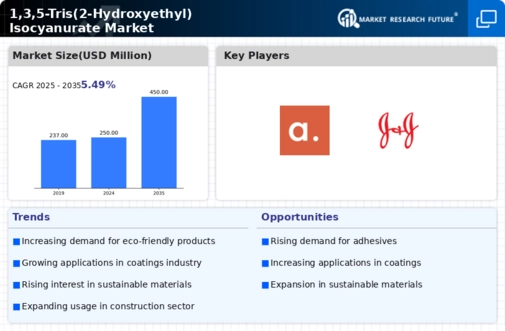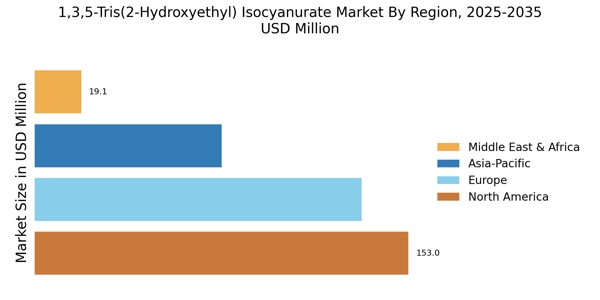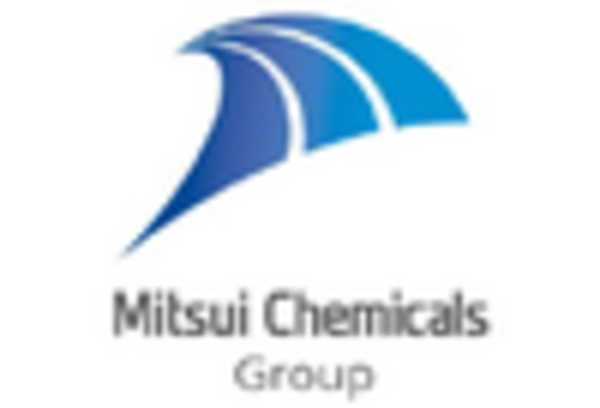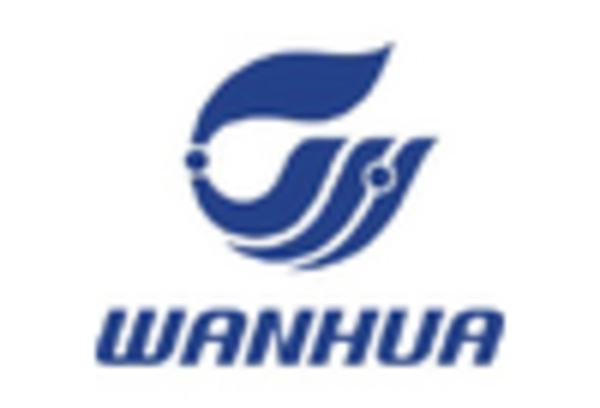Innovations in Polymer Chemistry
Innovations in polymer chemistry are driving advancements in the 1,3,5-Tris(2-Hydroxyethyl) Isocyanurate Market. Researchers are exploring new formulations that incorporate this isocyanurate to enhance the properties of polymers, such as flexibility, strength, and thermal stability. The ongoing development of novel applications in various industries, including automotive and electronics, suggests a promising future for this compound. Market data indicates that the polymer industry is expected to grow at a rate of 4% per year, which may lead to increased utilization of 1,3,5-Tris(2-Hydroxyethyl) Isocyanurate in innovative products. This trend highlights the potential for this isocyanurate to play a crucial role in the evolution of high-performance materials.
Growth in the Construction Sector
The construction sector plays a pivotal role in the expansion of the 1,3,5-Tris(2-Hydroxyethyl) Isocyanurate Market. With ongoing urbanization and infrastructure development, there is a heightened need for materials that offer superior performance and longevity. This isocyanurate is increasingly utilized in insulation materials and sealants, which are essential for energy efficiency in buildings. Recent market analysis suggests that the construction industry is set to witness a growth rate of around 6% annually, which could significantly impact the demand for 1,3,5-Tris(2-Hydroxyethyl) Isocyanurate. As sustainability becomes a priority, the use of this compound in eco-friendly construction materials is likely to gain traction.
Rising Demand in Coatings and Adhesives
The 1,3,5-Tris(2-Hydroxyethyl) Isocyanurate Market is experiencing a notable increase in demand from the coatings and adhesives sector. This compound is valued for its ability to enhance the performance characteristics of various formulations, including improved durability and resistance to environmental factors. As industries seek to develop more robust and long-lasting products, the incorporation of 1,3,5-Tris(2-Hydroxyethyl) Isocyanurate becomes increasingly attractive. Market data indicates that the coatings segment alone is projected to grow at a compound annual growth rate of approximately 5% over the next five years, further driving the demand for this isocyanurate. The versatility of this compound in formulating high-performance coatings is likely to bolster its presence in the market.
Regulatory Support for Eco-Friendly Products
Regulatory support for eco-friendly products is becoming a significant driver in the 1,3,5-Tris(2-Hydroxyethyl) Isocyanurate Market. Governments are increasingly implementing policies that encourage the use of sustainable materials in manufacturing processes. This isocyanurate, known for its low environmental impact, aligns well with these regulatory frameworks. As industries strive to comply with stringent environmental regulations, the demand for 1,3,5-Tris(2-Hydroxyethyl) Isocyanurate is likely to rise. Market trends indicate that companies adopting eco-friendly practices are experiencing a competitive advantage, which could further propel the growth of this isocyanurate in various applications, including coatings and adhesives.
Expanding Applications in the Automotive Sector
The automotive sector is emerging as a key area of growth for the 1,3,5-Tris(2-Hydroxyethyl) Isocyanurate Market. With the increasing focus on lightweight materials and fuel efficiency, this isocyanurate is being integrated into various automotive components, including interior and exterior parts. The demand for high-performance materials that can withstand extreme conditions is driving the adoption of 1,3,5-Tris(2-Hydroxyethyl) Isocyanurate in this sector. Recent Industry expert's suggest that the automotive industry is projected to grow at a rate of 5% annually, which may lead to a corresponding increase in the use of this isocyanurate. This trend indicates a promising future for the compound as it becomes integral to the development of advanced automotive technologies.


















Leave a Comment